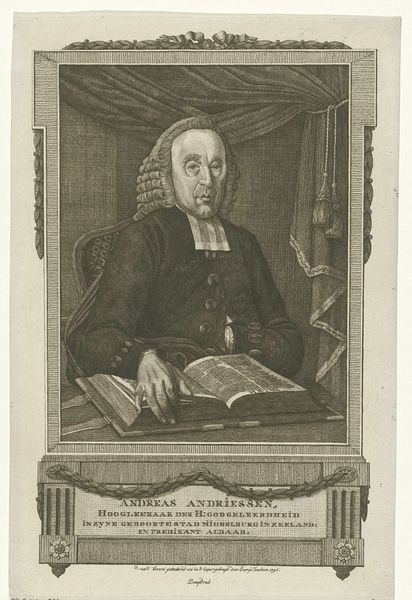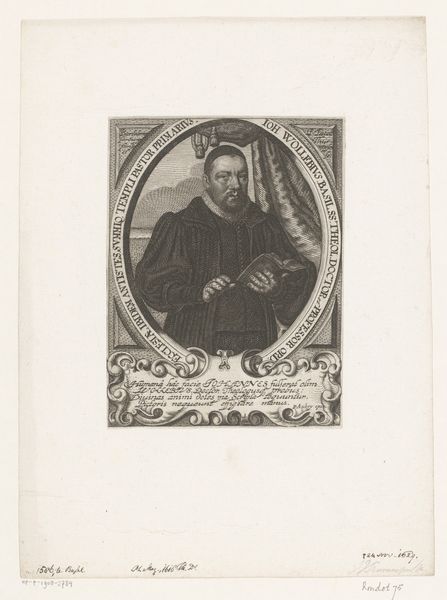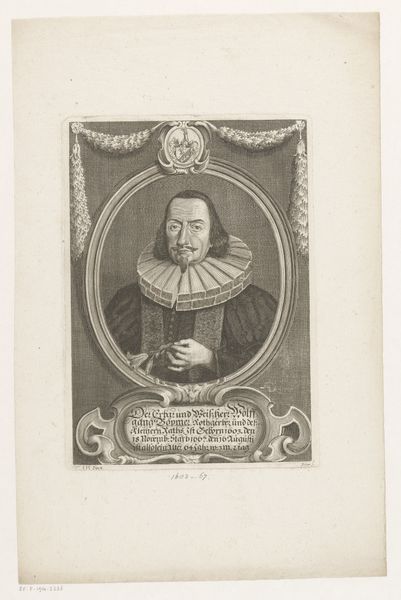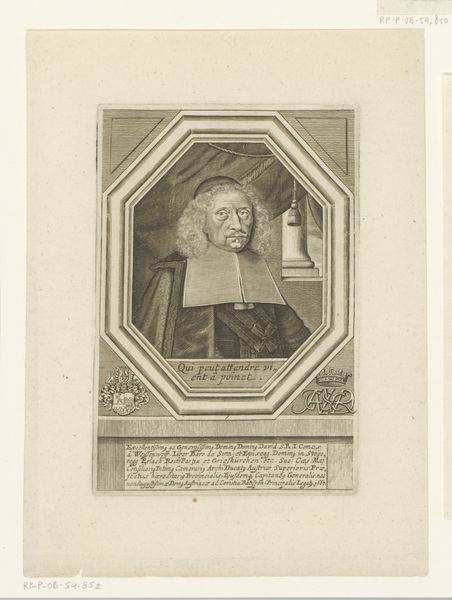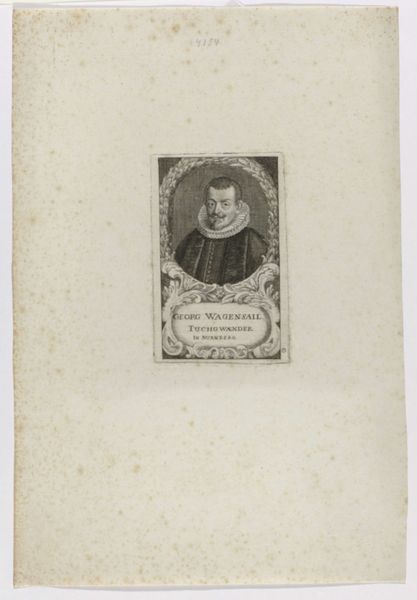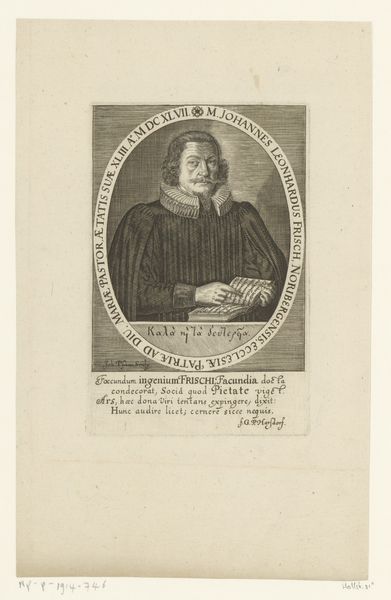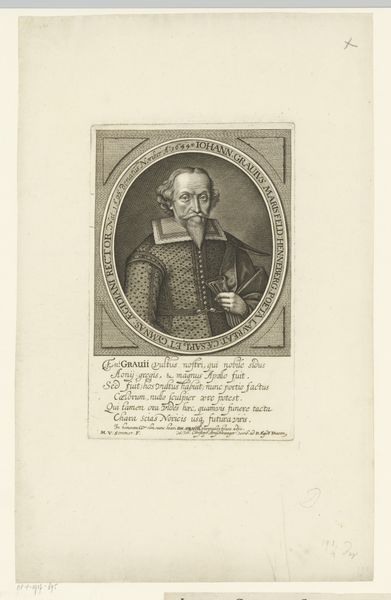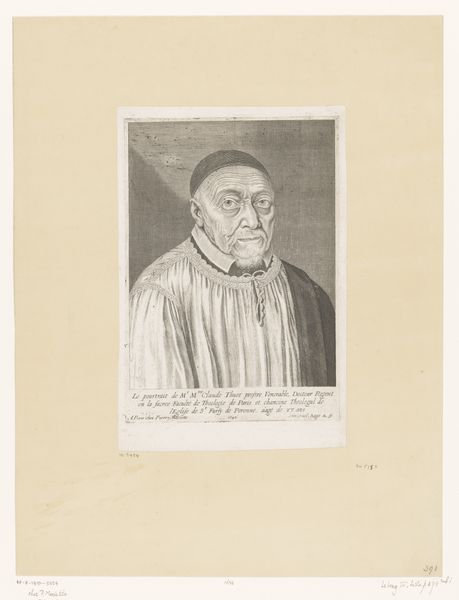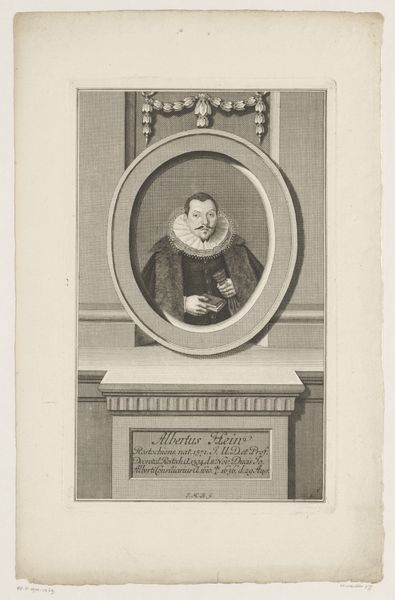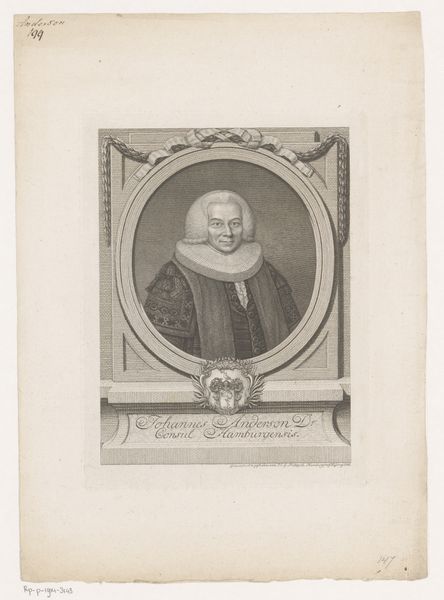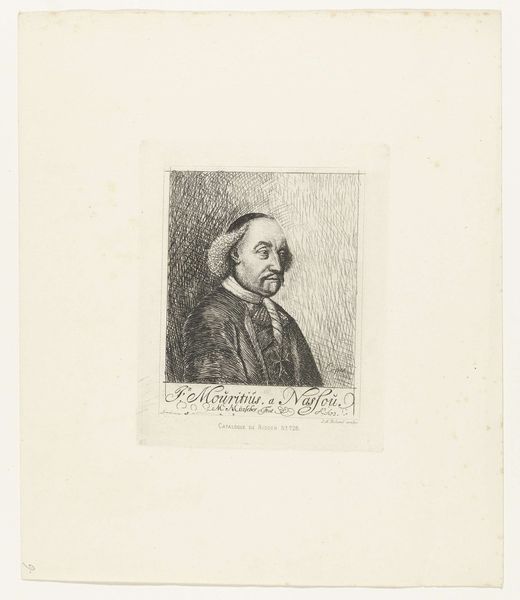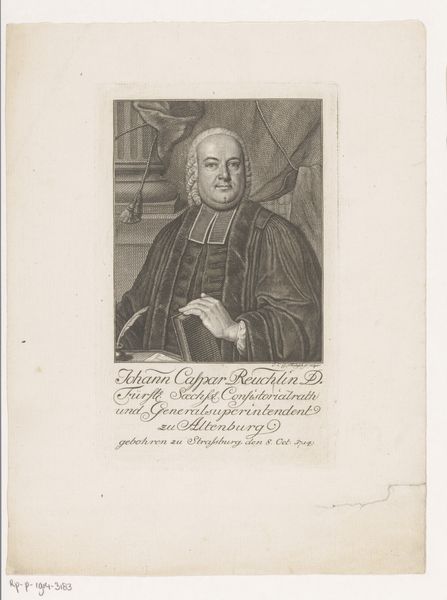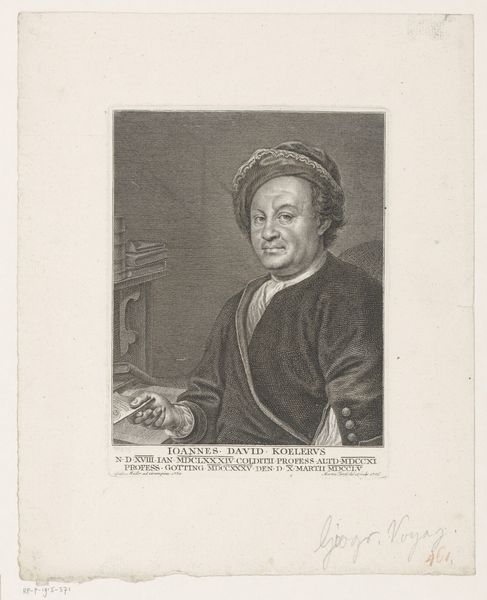
engraving
#
portrait
#
neoclacissism
#
old engraving style
#
academic-art
#
engraving
Dimensions: height 179 mm, width 133 mm
Copyright: Rijks Museum: Open Domain
Curator: This is a portrait of A.M. van Genderen, an engraving crafted around 1810. Editor: There's something intensely sober about this image. It almost feels like a formal declaration of something, contained within its oval frame and dark palette. Curator: Indeed. Produced by George Kockers, it neatly aligns with the Neoclassical style prevalent then, reflecting the social structure of the time through formal portraiture. Consider how engravers and publishers participated in circulating knowledge and reinforcing hierarchies. Editor: Right, portraiture wasn't merely aesthetic. It was a tool, like publishing itself, for establishing status, creating a kind of visual credentialing. Who *was* A.M. van Genderen, though? The inscription below the portrait notes he was a preacher in different places through the years... Curator: Yes. The portrait commemorates his last position in 'S-Gravezande 1810. Editor: It's compelling to think about art not in isolation but as existing in conjunction with socio-political changes and ideological positions. The figure of the clergyman, and even this rather specific style, represents the status quo, even in an age that thought of itself as radical. Curator: Certainly, the print illustrates the reach of Neoclassicism into aspects of Dutch society, communicating through readily available and inexpensive media—emphasizing, again, its power in disseminating status, religious devotion, and official representation of power. Editor: When viewing historical work, especially portraiture, it’s good to contemplate what this meant for those marginalized— whose visages were noticeably absent. How were different identities framed or excluded? This, too, informs how we see even a simple image. Curator: A crucial perspective. When considering visual narratives and historical context together, even understated engravings speak volumes about the complexities of representation and the enduring power of images. Editor: Absolutely. Images like this make one ask more than simple aesthetic questions; it really makes one look into representation itself, into who got to be seen, and why.
Comments
No comments
Be the first to comment and join the conversation on the ultimate creative platform.
